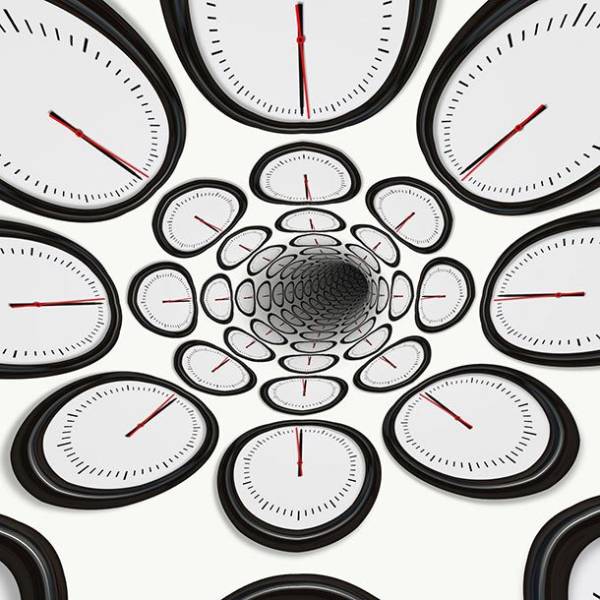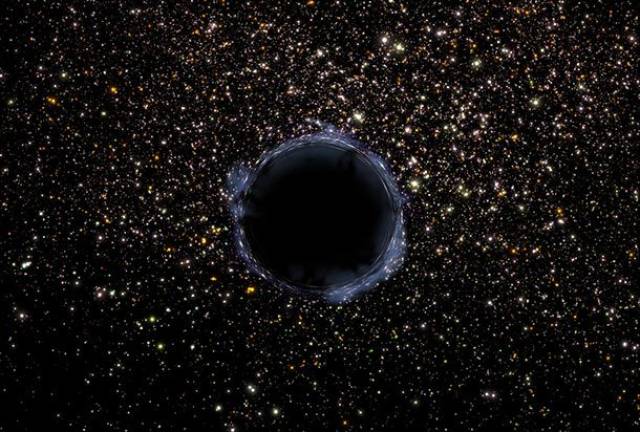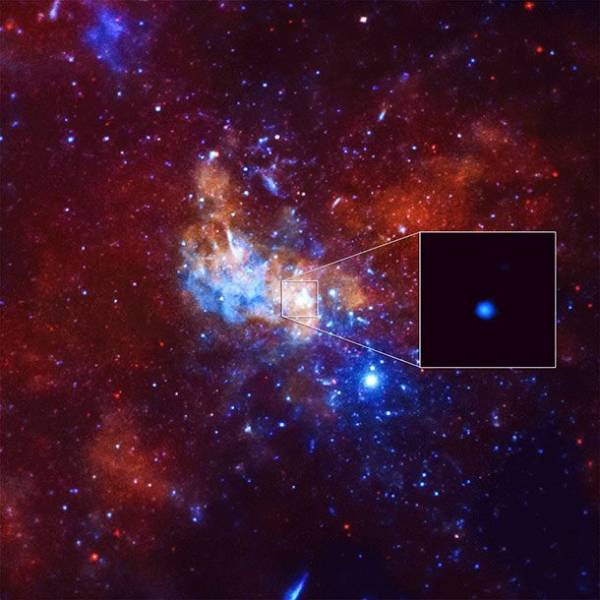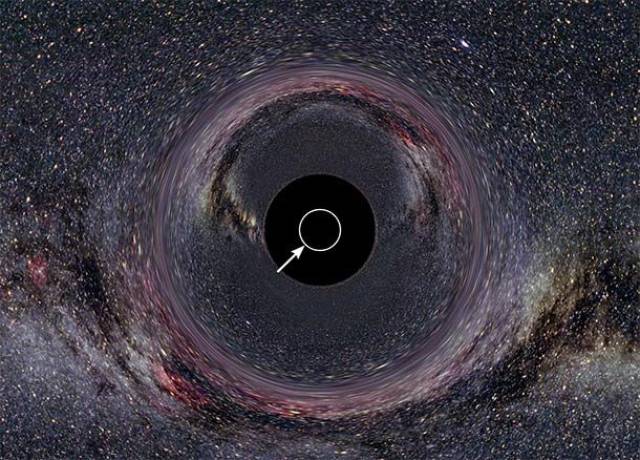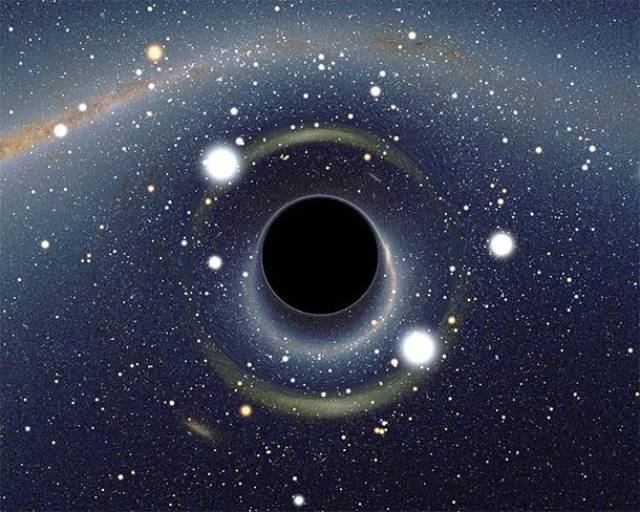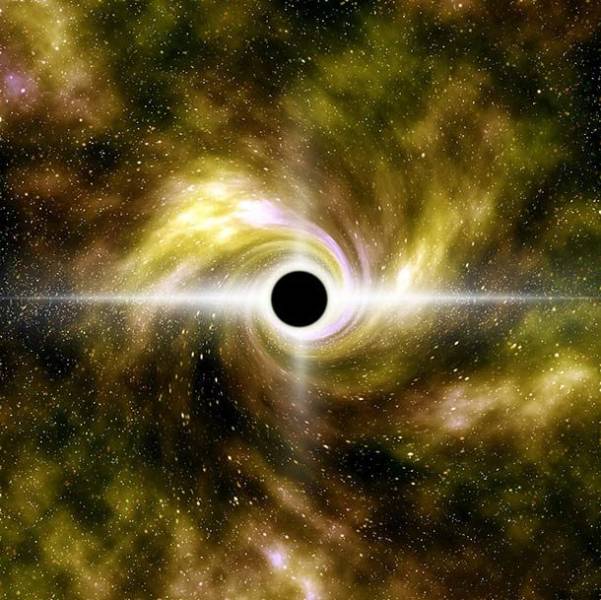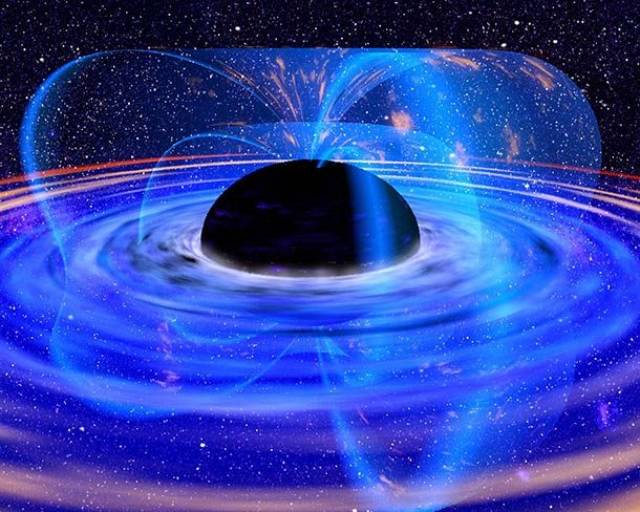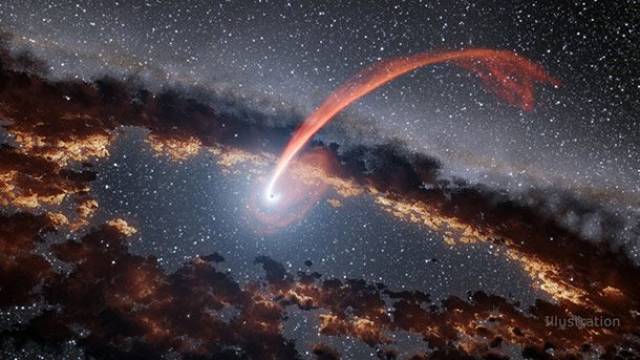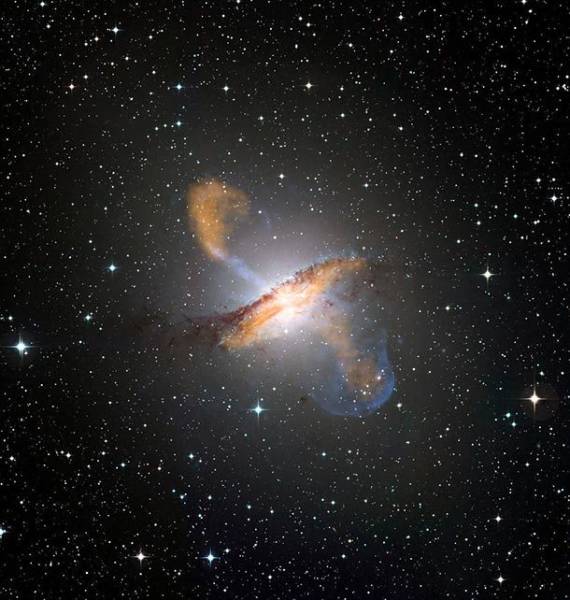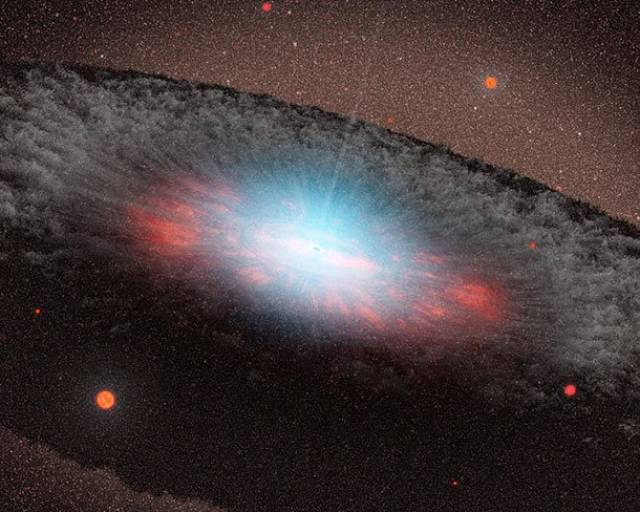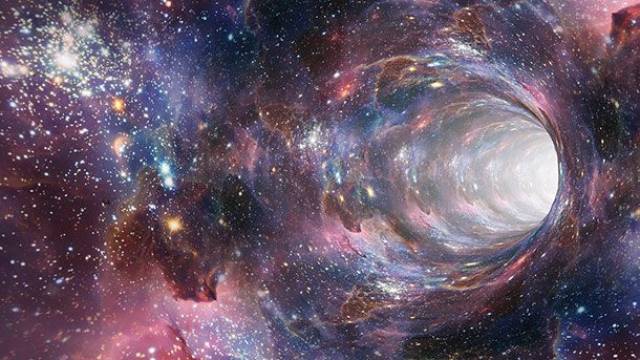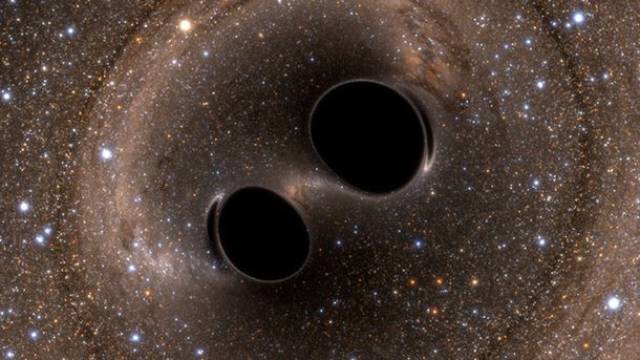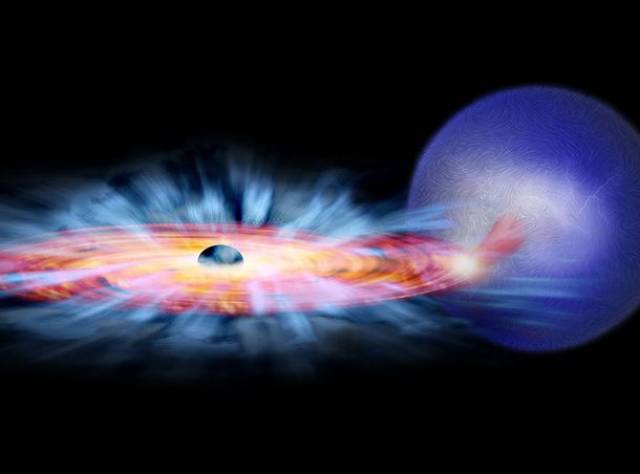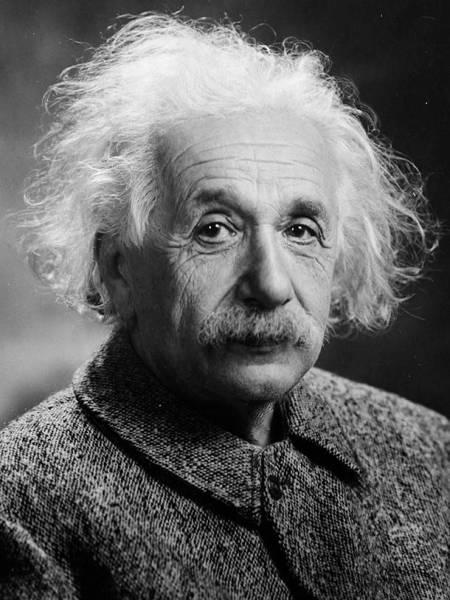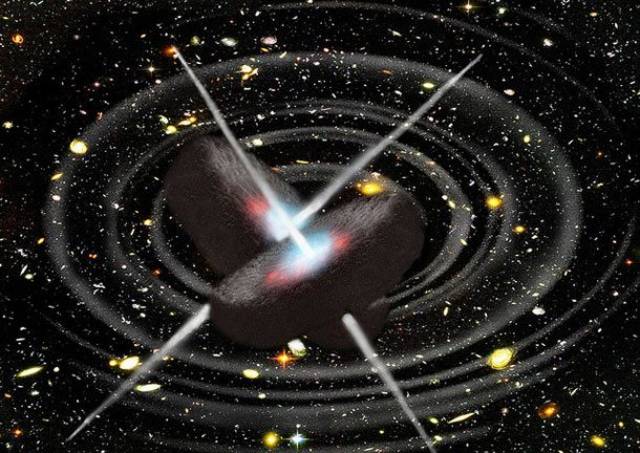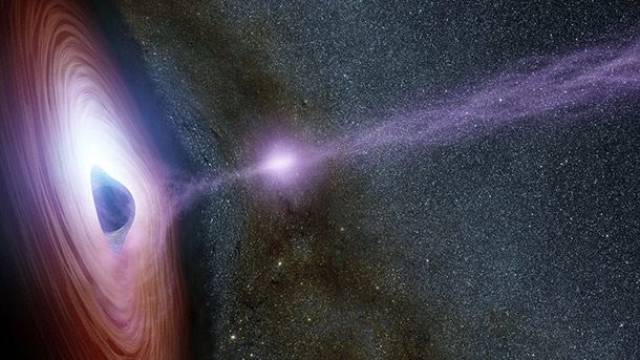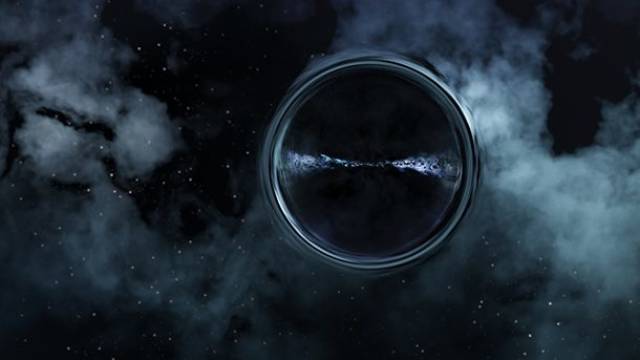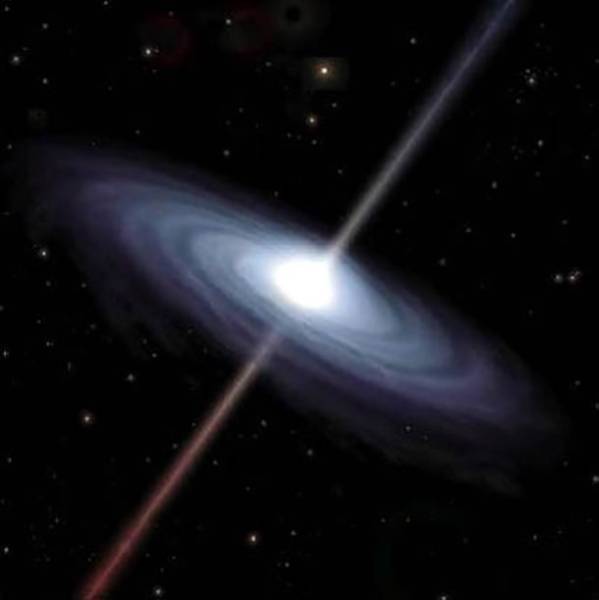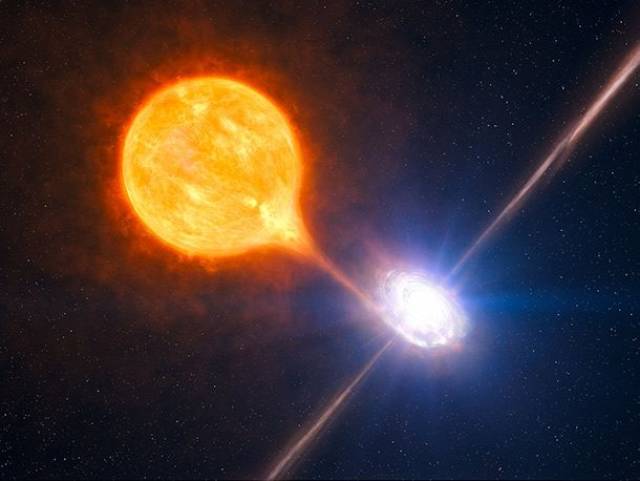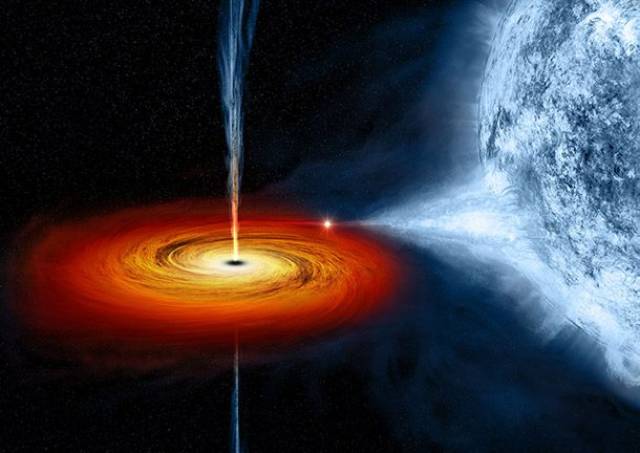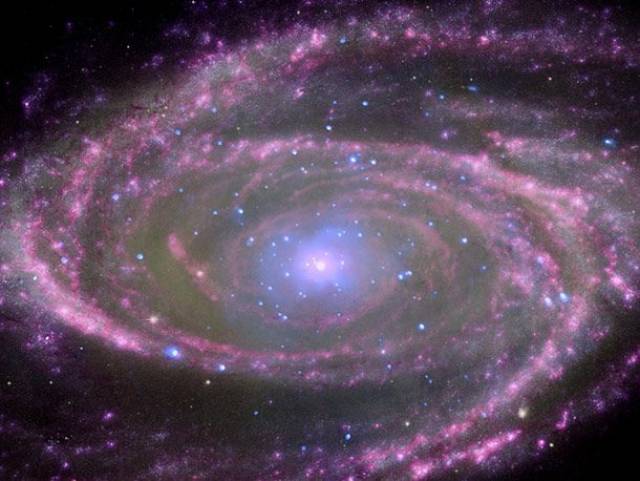Just as a clock runs a bit slower closer to sea level than up on a space station, clocks run really slow near black holes. It all has to do with gravity.
They can be infinitely big
There are a few theories that state they can be infinitely big. While not all scientists agree, there are several who believe that they can be infinitely big.
The nearest black hole to the Earth is 1,600 light years away
Our galaxy is covered in black holes, but the one most likely to destroy our measly planet is still well beyond our solar system’s borders.
Stay away from the event horizon
The “Event Horizon” as it is called in physics, is the border of the black of hole. It’s the point of no return. Before that point, you can still escape. After that point…not a chance.
There is a massive black hole at the center of the Milky Way galaxy.
It’s 30,000 light years away and is over 30 million times as massive as our sun.
Black holes eventually evaporate
While common knowledge states that nothing can escape a black hole, at least one thing does…radiation. According to some scientists, as the black holes emit radiation, they lose mass. This process has the potential to eventually kill the black hole.
Black holes are not infinitely small
At some point, the collapsing core of a black hole becomes even smaller than an atom or an electron. It eventually reaches its Planck Length, a quantum size limit that makes it barely measurable.
Black holes are not funnel-shaped; they are spheres
In most textbooks, you will probably see black holes that look like funnels. This is because they are being illustrated from the perspective of gravity wells. In reality, they are more like spheres.
When the core of a star collapses, the star rotates faster and becomes smaller. When it reaches the point where it does not have enough mass to become a black hole, it gets squeezed together to form a neutron star and continues to spin rapidly. Same applies to black holes. Even when the black hole shrinks down to Planck length, it continues to spin rapidly.
Things get weird when they get near a black hole
Black holes have the capacity to distort space itself, and as they continue to spin, that distortion gets just as distorted. It’s an infinite regression of distortions.
Getting near a black hole can kill you in horrible ways
Although it seems obvious that a black hole is incompatible with life, most people think they would just get crushed. This isn’t necessarily the case. Whatever part of your body reached the event horizon first would experience significantly more gravity, stretching your body until you die.
Black holes are not always black
Although they are known for their blackness, as we said earlier, they actually do emit electromagnetic radiation.
Black holes aren’t only destructive
Of course, in most circumstances, they probably would be, but there have been numerous theories, studies, and suggestions put forth that black holes can actually be harnessed for things like power and space travel.
Black holes can get really big
Although we just talked about how small they are, black holes expand as they collide with other black holes, allowing their size to increase with every collision.
There are different kinds of black holes
Modern astronomers have shown that black holes actually come in different variations. There are spinning black holes, electrical black holes, and spinning electrical black holes. The type of black hole depends on the amount of energy it puts out when it distorts space.
It was not Albert Einstein that discovered black holes
Albert Einstein revived the theory of black holes in 1916. Long before that, in 1783, a scientist named John Mitchell actually developed the theory after he wondered whether a gravitational force could be so strong that even light particles couldn’t escape it.
Black holes can be very dense
To have enough gravity to pull even light into itself, a black hole has to contain an incredible amount of mass in an extremely small space. This means that black holes must have a mass of about 10 to 30 billion times the mass of the Sun.
Although the vacuum of space doesn’t really allow for sound waves, if you listened with special instruments, you would hear a static-like sound. When a black hole pulls something in, its event horizon supercharges the speed of particles close to the speed of light which produces the “sound.”
Nothing can escape the pull of a black hole
Okay, that sounds obvious by this point, but we would like to introduce the caveat – unless it can move faster than the speed of light.
Black holes might create elements that make life possible
Researchers say that black holes create elements as they break down matter into subatomic particles. These particles have the ability to create elements heavier than helium, such as iron and carbon, as well as many others that are essential to the formation of life.
Black holes also eject matter into space
Black holes are best known for sucking up everything that gets near their event horizons. Once a mass gets into a black hole, it gets squashed so hard that its individual components become compressed and eventually break down into subatomic particles. Some scientists theorize that the matter is then ejected in a phenomenon known as a white hole.
Any matter can become a black hole
Technically speaking, stars aren’t the only things that can become black holes. If your car keys were shrunk down to an infinitesimally small point and still retained all of their mass, their density would reach astronomical levels which would make the force of their gravity ridiculously strong.
The laws of physics break down at the center of a black hole
According to theories, matter within a black hole is crushed to infinite density, and space and time cease to exist. When this happens, the laws of physics break down because it is not really humanly possible to conceive of anything with zero volume and infinite density.
There is no tunnel at the center of a black hole
As we said earlier, contrary to the popular belief that there is a tunnel in the middle of every black hole, all that exists at the center of a black hole is a massive amount of matter compressed infinitely.
Black holes determine the number of stars
According to some scientists, the number of stars in the universe is limited by the number of black holes. This is due to the way they affect gas clouds and element formation within the parts of the universe known to produce new stars.

